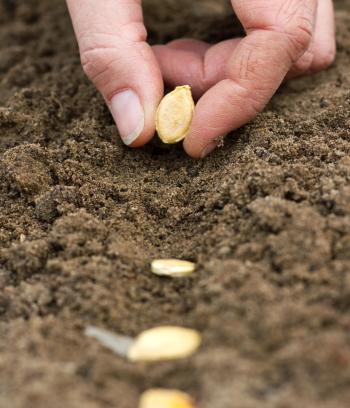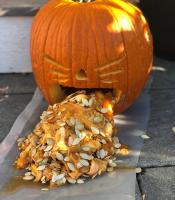
Have you used your local seed library lately? As we head into the fall planting season, it's a perfect time to swing by your local branch to pick up some free fruit, veggie, flower, or herb seeds.
If you're a planting pro and want to help us keep the seed library running, consider seed saving and donating your seeds to your local branch.

What is seed saving?

"Seed saving is the practice of saving seeds or other reproductive material from vegetables, grain, herbs, and flowers for use from year to year for annuals and nuts, tree fruits, and berries for perennials and trees."
-Wikipedia
Now, to be an expert at seed saving requires a ton of knowledge about the treatment and storage requirements of each individual type of seed. This is information you can find at resources such at IFAS (Institute of Food & Agricultural Sciences) and the Community Seed Network. They have you all the information you could ever need about germination rates, suggested isolation distances, and specialized seed saving procedures.
Fortunately, to be pretty good at seed saving all you need is a paper plate, an envelope, and time. To save seeds from one planting season to the next, most seeds need exactly 3 things:
To be free and clean of all plant matter. Seeds need to be fully separated from any part of the plant that will mildew or rot.
To be dry. Now we're talking real dry. Dry as a bone.
To be stored away from sunlight.
That's it. Simple enough.

How to do it

The first step is to remove the seeds from the surrounding flesh. Sometimes this is as simple as plucking the head off a flower as it begins to wilt, and sometimes this will require extensive excavation with a knife, and a willingness to get a little slimy. The important thing is to get as much of the surrounding 'gunk' off the seed as possible.
Next, spread your seeds out on a paper plate or towel (or other absorptive material) in a cool, dry location, and leave them to dry. This may only take a couple of days if your seeds come from a 'dry' plant (like a flower), but it can take up to two weeks if they come from wetter fruit or veg. It can be helpful to walk by every couple of days and shake your seeds around a little bit, so that they flip over a couple of times in the drying process. To test whether or not your seeds are dry, try breaking one in half. If it 'snaps', it's dry. If there's any 'bend' to the seed at all, it still needs a couple more days.
Once your seeds are dry, viola! You're done! Stick those bad boys in a labeled envelope and keep them for the next appropriate planting season.

What next?

The Alachua County Seed Library runs primarily on donations. If you have saved seeds you're not planning to use, consider dropping them off at your local library branch. We'll package, label, and integrate them into the seed library. We do ask that your donated seeds be labeled and clean of material that can rot or mildew. If you have any questions about donating seeds or the seed library in general, don't hesitate to stop by your local branch for more information.